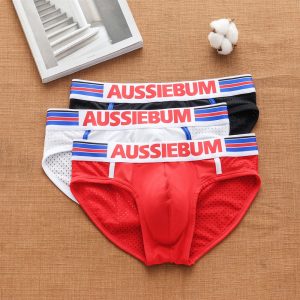
Gay art has long been an essential element of artistic culture, and this was no different in the 1980s when, faced with the AIDS crisis, artists began to embrace queer identity as a way to challenge patriarchal narratives of their time.
In the 1980s, LGBTQ+ artists joined forces with conservative right activists in a culture wars effort that used art as an avenue to challenge censorship and social power structures. Here is a look back at some of the most influential LGBTQ+ creators from that era.
Robert Mapplethorpe
Robert Mapplethorpe achieved notoriety in the 1980s for his daring gay art. His photographs of naked African American men and ritualized scenes of sexual domination and bondage shocked some Americans, sparking political controversy. In 1989, Jesse Helms, a conservative senator, and 100 Congressmen forced Washington's Corcoran Gallery to remove Mapplethorpe's portfolio from display.
Mapplethorpe was able to create art that revolutionized how society saw gay people by depicting homosexuality and fetishization through classic portraiture techniques. Despite all of the controversy, his works remain timeless classic masterpieces today.
Mapplethorpe's work also explores the concept of beauty, emphasizing non-traditional forms of femininity and masculinity. His portraits of Louise Bourgeois and Cindy Sherman, for instance, reveal their sexual desire in a playful, defiant, and provocative manner.
Mapplethorpe's work is remarkable for its sculptural-like photography. He used gelatin silver prints to capture subjects' bodies, often enlarging them and creating depth. His flowers appear like chiseled marble.
The photographer was an expert of light and shadow. His work often focused on nudes, showing how nudes can be perceived differently depending on the light source. For instance, one image entitled "Poppy" features two intertwined stems that resemble body parts or desires.
He also focused on Lisa Lyon, a female body builder. Mapplethorpe photographed her powerful physique both in his studio and outdoors.
Mapplethorpe's artwork often featured provocative themes. He had a knack for photography and an adeptness with Polaroid cameras; moreover, his self-portraiture showed him wearing both butch and femme drag outfits, as well as various costumes made out of monkey fur or leather. His photos showcased an eclectic range of emotions through vibrant colors.
Peter Hujar
Peter Hujar's captivating portraiture and landscapes of New York's East Village, Downtown, and cruising hot spots created a vibrant world of art and activism between Stonewall riots in 1969 and the AIDS crisis of the 1980s. Like his peers, Hujar captured both gay life's ascension as well as its growing sexual liberation movement.
Hujar was an extraordinary success despite his limited resources and penniless lifestyle, becoming one of America's most influential photographers. Working from his East Village apartment on Second Avenue, he focused his lens on those close to him - friends who provided inspiration and formed his artistic community.
The works produced by Boles depict a world of revolutionary figures, Downtown vagabonds, and cruising flaneurs. He imagined an outlaws' community of rebels and artists whose collective vision served as the precursor to modern gay culture and its political expression.
Hujar's photographic style focused on the individual, often portraying his subjects with subtle yet insightful wit. He captured women, men, and animals in unique poses that revealed their features as well as fleeting moods or emotional states as well as their intimate connections to their environment.
Hujar's signature style was the reclining pose, which he developed into a unique photographic genre that allowed subjects to show their faces without being framed by a lens. Examples of his portraits include Warhol superstar Candy Darling on her deathbed and Fran Lebowitz lying facedown on a mattress.
His 2 1/4-inch camera allowed him to capture his subjects directly, sometimes close up, without using props or harsh lighting. This allowed him to create nudes that were both intimate and captivating.
In his later years, he became increasingly interested in the body. He experimented with body portraits that depicted extremes like youth or old age as well as features or transient states like pregnancy or arousal.
He also captured images of rural landscapes and depressing urban environments. Here his empathetic gaze found its perfect match, producing photographs that elicit poetry and an uncanny attentiveness.
Felix Gonzales-Torres
Gonzalez-Torres' works, despite their minimal form, are intensely emotional and evocative. Utilizing everyday materials, they comment on themes such as loss, identity, memory, and the human condition.
Gonzalez-Torres was an out gay artist who created in the 1980s, when gay rights and AIDS were at the forefront of American culture. As part of Group Material's collective, his work focused on community engagement and activist interventions.
He was born in Guaimaro, Cuba and grew up in Puerto Rico. In 1979 he relocated to New York City where he earned both a bachelor's degree from Pratt Institute and an MFA from the International Center for Photography.
In 1987, he co-founded an artists' collective with Julie Ault and Doug Ashford called Group Material. This collective addressed social and political issues through staged exhibitions. In 1989, Group Material unveiled a billboard in Sheridan Square commemorating the 20th anniversary of Stonewall Rebellion.
His first solo exhibitions took place in 1988 at Rastovski Gallery and INTAR Gallery, both located in New York. A year later, Andrea Rosen Gallery in New York showcased Gonzalez-Torres' artwork.
Gonzalez-Torres had a brief but profound career that explored the connection between private and public space, as well as homosexual identity. He also addressed the socially and politically charged representation of homosexuality through subtle references to his own life; for instance, installing an evocative black-and-white photograph of his empty bed on billboards around Manhattan.
His light string sculptures, composed of two intertwining cords connected to an array of low-wattage lights, reflect the concerns of their time. These works can be displayed in a variety of ways and their appearance is entirely up to the viewer's imagination.
Gonzalez-Torres passed away from AIDS-related causes in 1996, yet his work continues to be celebrated and studied today. It has been featured at the Guggenheim Museum, New York; Whitney Museum of Art, New York; and Museo de Arte Moderno in Spain.
Like Robert Mapplethorpe, Gonzales-Torres was an artist who tackled dark subjects with humor. However, unlike Mapplethorpe who primarily displayed photography, Gonzalez-Torres' minimalist pieces are emotionally and politically engaging. He used everyday materials like candy, strings of lights, stacks of paper as well as jigsaw puzzles and mirrors; furthermore his works often included words or text meant to be read in context.
Stanley Stellar
Stanley Stellar has captured the beauty, fear and love of gay life for decades. His films document Christopher Street Piers celebrations, the early Pride Parades, as well as couples infected with AIDS in its early stages. His images have become iconic icons of gay liberation that have been exhibited around the globe.
At the start of his photography journey, Stellar was drawn to the "secret world" of gay men in Manhattan's West Village - where there were no public indications of sexuality and men were free to express themselves without judgment. At that time, homosexuality was still illegal, giving him a unique chance to document this unique area through pictures.
He photographed the men in his community for various publications, such as New York Native Christopher Street Magazine and That New Magazine. These images captured the vibrant gay scene of the 1980s, when real estate values began to soar and AIDS began to profoundly affect New York City's gay landscape.
His early photographs, now considered to be his most influential works, focus on men's physicality and create a sense of depth and humanity that sets him apart from many contemporary photographers who focus more on eye candy. He often uses horizontal nudes - a technique which allows him to capture all parts of a model's body from shoulder to ankle. In Torso (1991), for example, the model lies flat over a blanket spread over rough wooden flooring.
The image tilts the horizon slightly, so that the ground recedes behind him. In Ron Diving into the Hudson River, 1988, the model is caught mid-dive but his feet only touch the right edge of the photo.
His work is both intimate and political, capturing the experiences of gay people expressed through their own voices. It stands as a testament to the resilience and strength of this queer community.
He was one of the first gay men to publish a book. In 1979, he released "Boys in the Hood" and two years later "Gays & Girls," both available through his website. Most recently, his latest publication "The Beauty of All Men" serves as a monograph featuring some of his earlier photographs.




